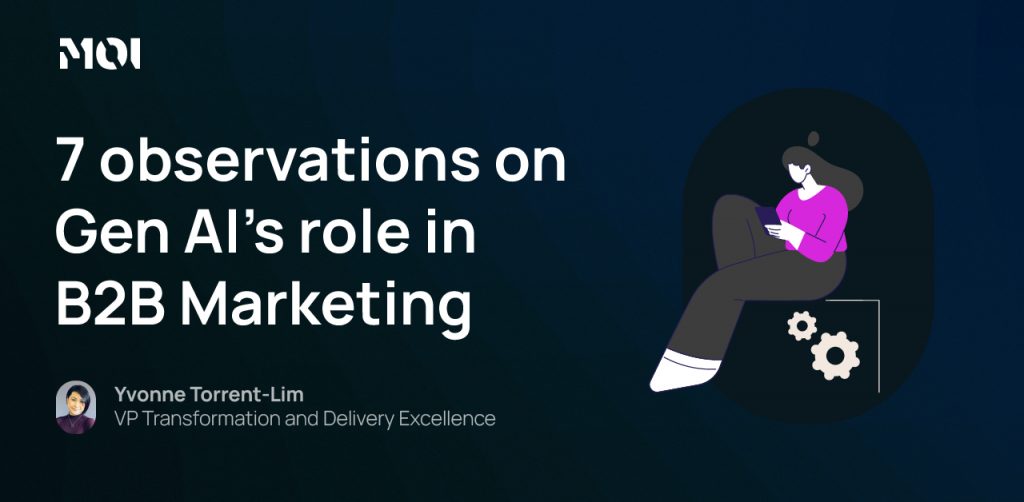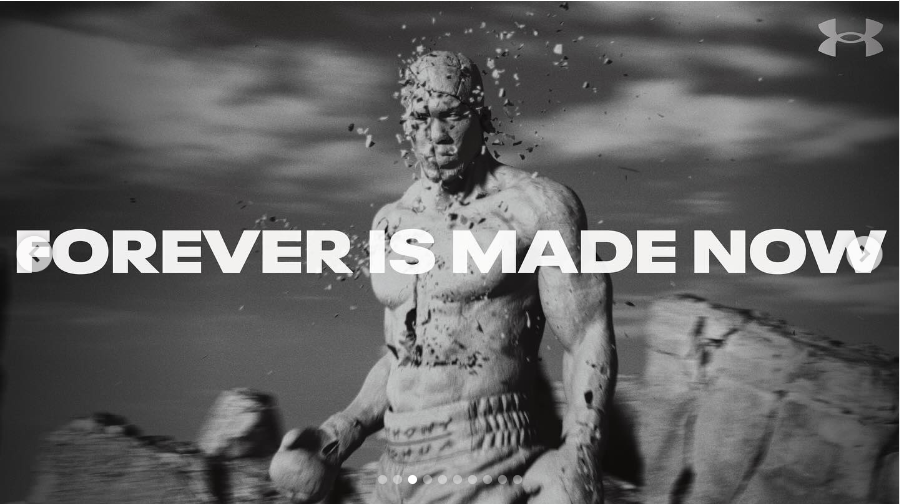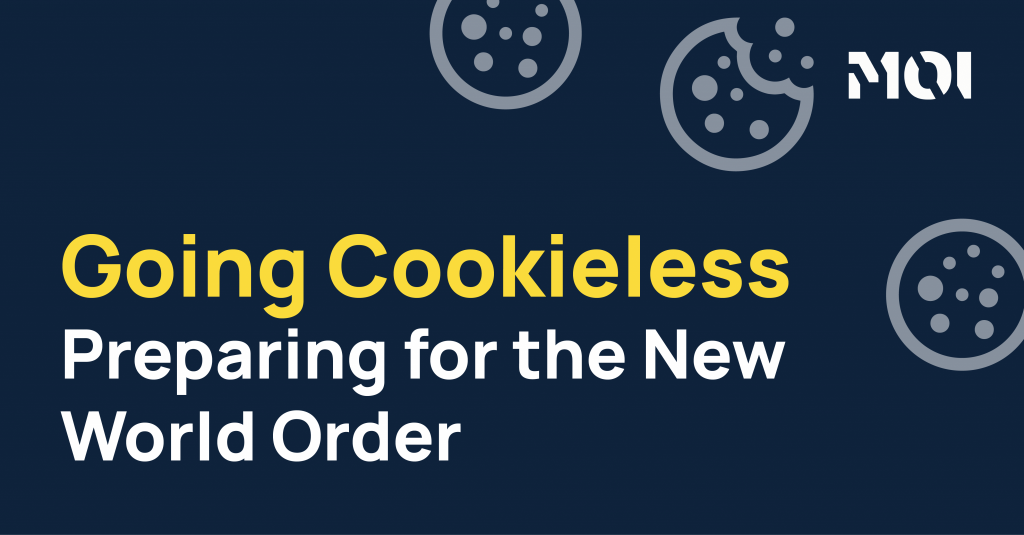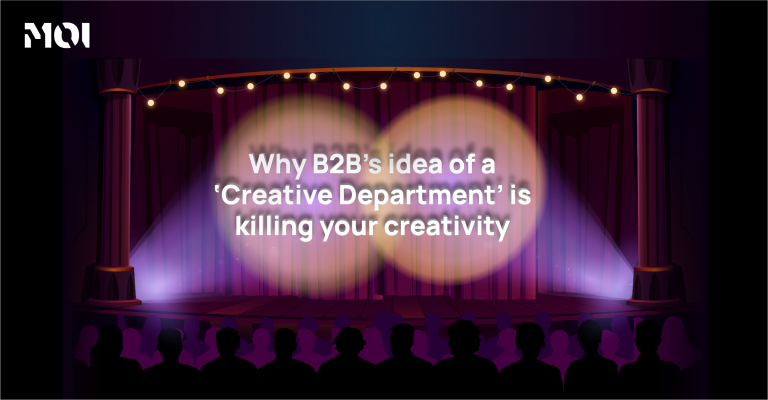
You’ve probably heard the Harvard buzz: “AI Won’t Replace Humans — But Humans With AI Will Replace Humans Without AI”. No fluff, just fact: AI in marketing is like that secret ingredient that turns a good stew into a culinary legend. It’s not about the robots taking over; it’s about them giving us superpowers. The integration of AI in our daily practices is not just inevitable; it’s essential.
It’s been over a year since ChatGPT become a household name, a meme and for some, an indispensable personal assistant. We’ve seen the proliferation and occasional misuse of the letters “A” and “I” in every tech realm. While native applications are gradually integrating AI features, 3rd party SAAS startups are rapidly flooding the market with incredible speed and GTM timelines are reminiscent of Skynet.
Many have questioned at the start if agency jobs were immediately at risk. We now understand it’s a transformative journey, not a rip and replace. But make no mistake, change is inevitable in the agency workflow, if it hasn’t already occurred. Here are my observations and a bold glimpse into the future of AI for agencies.
1. Crafting the Next Masterpiece
How creatives experiment, play and produce with AI will reveal the extent of its potential, highlighting the essential role of human intervention in achieving polish. While one-click video or creative apps offer speed, they lack the finesse provided by human touch. The challenge lies in leveraging AI’s speed without compromising on quality. For an inspiring demonstration of what humans and machines can accomplish, explore this Coca-Cola ad masterpiece. AI brought speed and computing power to the table, but it’s human creativity that adds soul and polish. Whether you like the message or not, it’s undeniably a visually captivating experience.
Yet, Jerry Della Femina’s adage rings true: “Nothing kills a bad product faster than good advertising.” This is best illustrated by the recent failed Willy Wonka Experience event in Glasgow, Scotland, where the AI-drawn fantasy was quickly labelled a marketing scam once attendees arrived at a dismal, abandoned warehouse with sad props and embarrassed actors. It serves as a reminder to always deliver on your marketing promises.
The other aspect is around originality, governance and copyright – are we respecting artists and their original work? If humans aren’t vetting, checking and validating the AI output, could we be unwittingly plagiarising as opposed to paying homage to an artist’s original piece? Look at what happened recently with Under Armour and you’ll see very quickly how important it is to have that layer of human intervention.

2. Decoding Desires with Data
Can machine learning understand a client’s preferences, desires, wants, and needs? Can it anticipate challenges and present solutions intelligently? Perhaps even delve into the psychology behind their purchasing decisions, uncovering what they may not reveal during a video call? Could machine learning know them better than they know themselves and their organisations? While these may not be happening right now, this level of insight may soon be expected of agencies. By combining advanced technology with human emotional intelligence, we’re going to solve more riddles and predict the words, even before a client whispers it. Creepy? A little. Game-changing? Absolutely.
3. The Efficiency Evolution
AI’s helping us find shortcuts we never knew existed. We’re talking hyperspeed efficiency that’ll make The Flash look like he’s walking. This is particularly true for critical functions like operations, finance, and project management. We already rely heavily on financial, scheduling and task management apps, which now incorporate predictive models for resource management, reporting, estimating, scheduling, and note taking. The list is endless.
What’s the human’s role in this? We can’t simply race against AI on computers; it’s not a sprint. The human world is incredibly complex, with diverse departments, operating systems, and ongoing transformation programmes. We can’t expect AI to solve this complexity for us. instead, we must leverage the human capacity to navigate real-world intricacies, experimenting, testing, and iterating with AI as our ally. AI can streamline backend operations while humans drive decision-making, making us smarter in our approach to complexity.
4. Brainpower Plus Computing Power
AI in data offers unprecedented insights into customers, trends, and all the juicy stuff that can make or break a campaign. However, it’s human data analysts who transform this data into meaningful stories and ensure ethical considerations. Don’t get me wrong; while AI outperforms humans in data analysis speed, patterns recognition, and coverage, we still steer and translate insights into action.
5. Demand in a Cookieless World
Cookies may be going out of style (not the chocolate chip variety, mind you), but AI is stepping up to guide us in placing our ads and forging real connections with people. While I’m no expert, Liz Wood, our VP of Demand, has the lowdown on this cookieless new world order as detailed in her article. How will advertisers navigate this new landscape? It sounds like we’re in for a wild ride with advanced AI targeting, optimisation, segmentation, and first-party data charting new territories. We’ve barely scratched the surface of what’s possible. It is going to transform the customer experience and help us form new, trusted relationship with brands.

6. A Match Made in Marketing Heaven
Account-based marketing is undoubtedly in the future of B2B.It’s about smarter targeting, zero waste, maximising budgets, and making customers feel like we’ve only got eyes for them. Just a few years ago, ABM was limited to a select set of target accounts due to resource constraints. However, AI has levelled the playing field, empowering every marketer with unprecedented processing power to personalise experiences like never before. It’s the perfect fusion of ABM strategy and tactics with AI technology, poised to unlock opportunities previously out of reach. But to achieve this, you need the brains behind the machine. Again, while I’m no authority on this, some clever cookies at MOI have broken this down to a science. Learn more about it here.
7. Big Dreams, Big Bucks
Then there’s Publicis, tossing money into the AI pot like they’re making it rain. But what truly stands out about their strategy is their investment in people. While we may not all have deep pockets, the approach is solid: empower humans. At MOI, we’re proud to echo this sentiment. We’ve created a safe lab environment, allowing individuals to immerse themselves in tech, with an allocated AI budget enabling us to test, fail fast and apply our learnings. We’ve put people before platform.
It’s been over 12 months since the world went ChatGPT crazy, yet we’re merely at the base of Everest—exploring, experimenting, testing, and iterating. The geek in me is thrilled about our trajectory. Gen AI has taught me how to code without pulling my hair out, turning daydreams into visuals faster than I can open a file in Photoshop. And yes, it’s reminded me that bedtime stories with my kiddo should not be outsourced to AI, and that’s perfectly fine. Because even ChatGPT agrees, sometimes the simplest answers, like the meaning of life, the universe, and everything, is just “42.”



